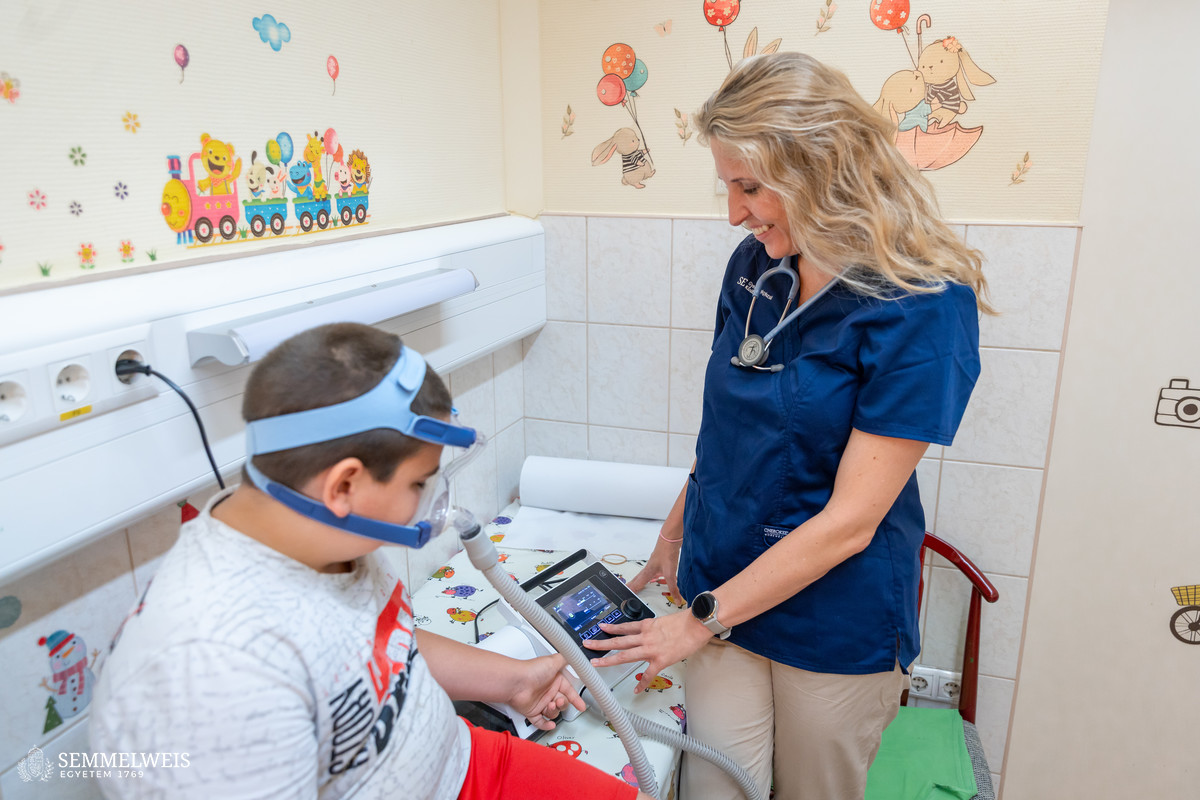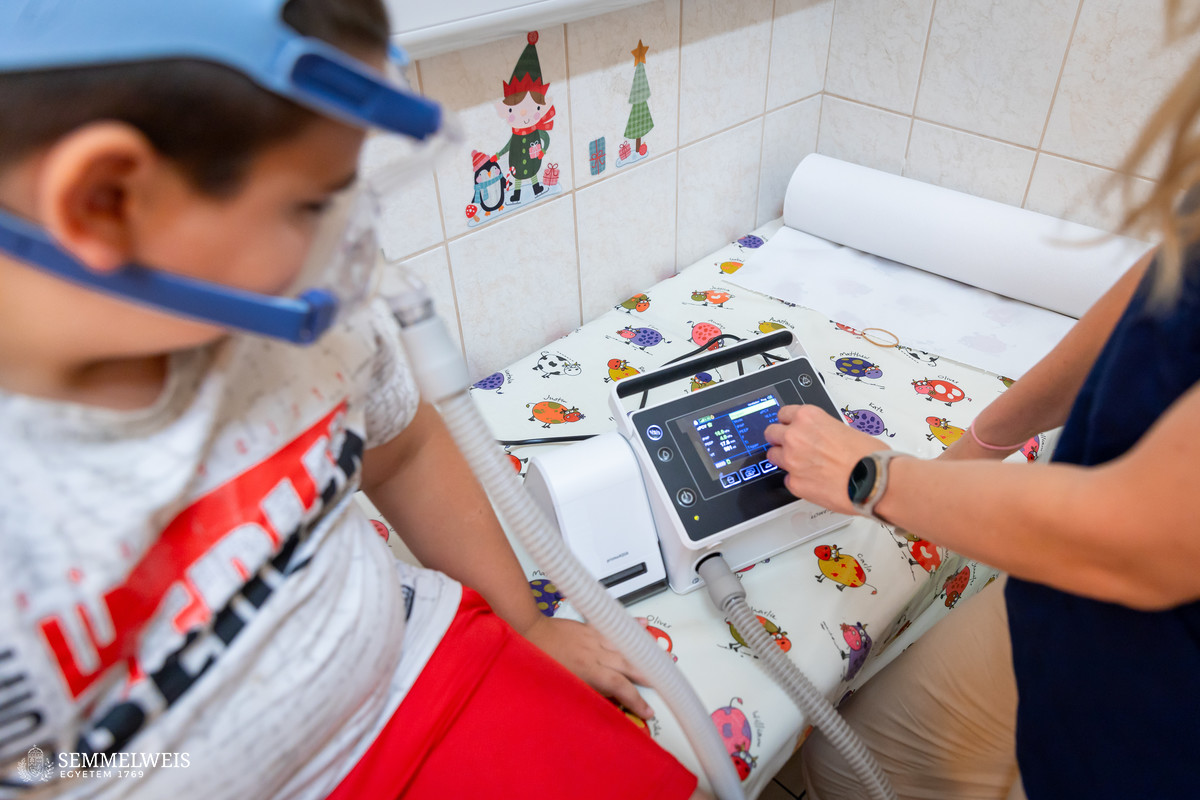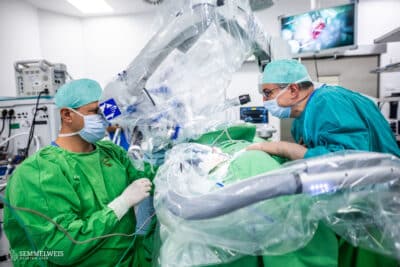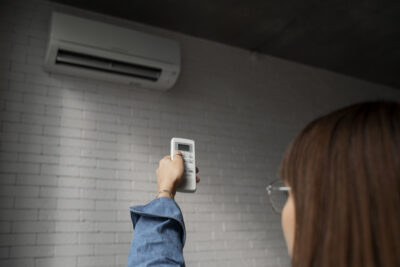In the summer of 2017, Assistant Professor Dr. Dorottya Czövek launched the Non-Invasive Home Ventilation Program for children at the Bókay Street Department of the Pediatric Center, which was a novelty in Hungary at that time. In just 7 years, the program has helped a hundred chronically ill children to recover at home with their families.
With this number of patients, Semmelweis University’s Pediatric Center is one of the five largest in Europe.
According to Dr. Dorottya Czövek, the reason for the high number of cases is that at the start of the program, many children who had been in need of long-term respiratory support for an extended period of time were involved. To this day, there are patients with very poor conditions from all over the country, but fortunately, as the years go by, this is becoming less and less common and we have more opportunities to perform screening tests, she stressed. Apart from Semmelweis University, a similar program in Hungary is also in place at Bethesda Children’s Hospital.
Prior to the establishment of the long-term ventilation program, intensive care units had looked after and arranged for a small number of patients requiring 24-hour ventilation across the country to be treated at home, but most patients did not receive any care. Organizing a home ventilation program has given us the opportunity to improve the quality of life of many more children, Dr. Dorottya Czövek noted. As she recalled:
We had a patient whose mother hadn’t slept for three years because she woke her child up all night when she saw that she wasn’t breathing well. This 12-year-old girl weighed 14 kilos when she came to us.
A malfunction of a part of the respiratory system (respiratory center, muscles, or airways/lungs) causes an increase in carbon dioxide levels in the body, leading to chronic respiratory failure. The classic daytime symptoms such as headaches, poor cognitive function, poor school performance, and aggressiveness also appear, the assistant professor said. These are the complaints that parents usually turn to us with, and we then discover that sleep-disordered breathing is the cause, she added.
The diagnosis of sleep-disordered breathing is always made by a sleep study with carbon dioxide level monitoring and a complex pulmonological examination. If a child is confirmed to have a respiratory disorder, an ear, nose, and throat examination is performed to rule out any surgically treatable airway obstruction abnormality. After approval by a board of doctors, habituation of patients to the ventilator as well as ventilator adjustment are done in a hospital setting, adapted to the child’s different sleep stages, the specialist explained.
Parents are taught how to use the machines at the center and can go home – typically after 2-3 days – when they are confident in using them, Dr. Dorottya Czövek pointed out. Patients in the home ventilation program are provided with the necessary equipment for treatment. This is important because these children are affected by chronic illnesses that will, in most cases, stay with them for the rest of their lives. The assistant professor said that so far, out of 100 cases, they had been able to take only three children safely off the ventilator, otherwise the settings of the machine were typically changed according to the current condition of the young patients, which was assessed at regular check-ups.
Most of the 100 children treated so far have some form of muscle or central nervous system disease, but complex disorders affecting the face or respiratory system are also common. In addition, there is a growing number of patients requiring home ventilation due to obesity.
Patients in the program range in age from newborn to 18 years old. The smallest baby weighed 2400 grams and the largest child 170 kilograms, Dr. Dorottya Czövek said, speaking of the heterogeneous composition of the group of patients.
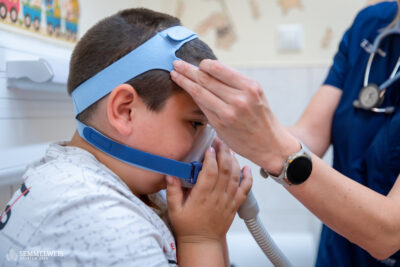 Our 100th patient is an infant suffering from a rare syndrome, one that is unique in Hungary, and which is associated with facial developmental abnormalities and muscle weakness, she noted. And the 101st patient is 10-year-old Máté, whose mother Krisztina Köves told our website that her son had had complaints since he was 3-4 years old, which were aggravated by a recent virus, and that is how he was admitted to the program. According to the family, the training process was very easy, and Máté too can operate the machine all by himself.
Our 100th patient is an infant suffering from a rare syndrome, one that is unique in Hungary, and which is associated with facial developmental abnormalities and muscle weakness, she noted. And the 101st patient is 10-year-old Máté, whose mother Krisztina Köves told our website that her son had had complaints since he was 3-4 years old, which were aggravated by a recent virus, and that is how he was admitted to the program. According to the family, the training process was very easy, and Máté too can operate the machine all by himself.
Dr. Dorottya Czövek’s work in treating children with lung disease was recognized with the Junior Prima Award in 2018. After several years of research and clinical work in Switzerland and Australia, she joined the staff of the Pediatric Center, where she started setting up a pediatric pulmonology research group and also launched the home ventilation program. In addition to patients with cystic fibrosis, her main focus is on the various pulmonary and cardiological health impact assessments of the ventilation of children with muscle and lung diseases.
Eszter Keresztes
Translation: Dr. Balázs Csizmadia
Photos by Boglárka Zellei – Semmelweis University
